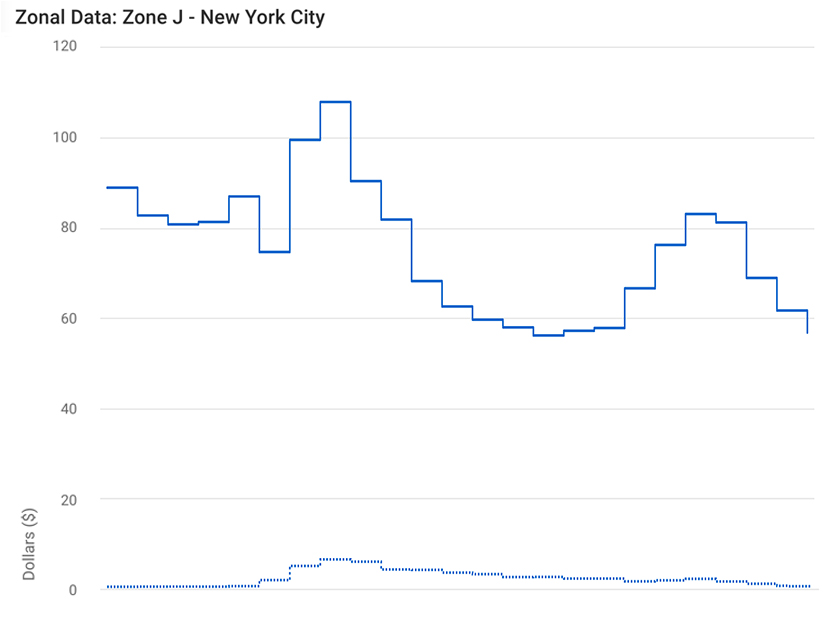
New York state officials on Tuesday issued a straw proposal for integrating community distributed generation (CDG) into community choice aggregation (CCA) on an opt-out basis (14-M-0224).
The Public Service Commission initiated the CDG program to give utility customers a chance to participate in distributed solar regardless of whether they own a residence or business suitable for installing panels.
“Opt-out CDG encourages municipal governments — and their constituents — to take control of their energy future through locally driven CDG participation,” Department of Public Service said in the proposal. “Staff is confident that a robust opt-out CDG program will encourage a multitude of new administrators to join the CCA market, including public and nonprofit organizations, leading to an increase in market competition which could spur innovation by means of the CCA model.”
CCA “is a municipal model for procuring energy that replaces the utility as the default supplier of electricity and/or natural gas for virtually all homes and small businesses within a jurisdiction.” All utility customers financially support clean generation facilities through surcharges added to their bills.
The commission decided to focus the program on residential and other small customers because they otherwise would not be able to benefit from clean distributed energy resources. The opt-out model of implementation is designed to pull more customers into the program, given people’s tendency to take the path of least resistance: Customers in the municipality would be automatically enrolled, unless they opt out.
Structure and Rules
The commission’s November procedural order directed that the proposal detail the program’s operation, oversight and enforcement. The DPS held two public webinars in February and incorporated some of the comments into its recommendations.
Staff recommended that two unique products be offered to municipalities: standalone CDG, or CDG in addition to becoming a CCA. Much of the proposal is concerned with rules to minimize confusion for those customers in a CCA; the timelines for the CDG opt-out and CCA supply will not necessarily line up. It also accounts for customers already enrolled in a CDG program.
“We understand that a combined offering for [municipalities] who choose to offer both supply and CDG will allow for greater energy options and consumer choices,” Michael O’Donnell, DPS utility analyst, said during the first webinar. “We need to guarantee that customers who already have a supply product are not confused by another product offering or misguided by the timing of the offerings.”
The straw proposal also recommends that the following customers, who are ineligible to be opt-out enrolled in CCA supply, be eligible for opt-out enrollment in CDG:
- time-of-use or time varying rate customers;
- Assistance Program Participant (APP) customers;
- customers with energy service company (ESCO) blocks on their utility accounts; and
- customers who are being served by an ESCO.
The proposal recommends that low-income APP customers be the first members to be subscribed in the municipalities’ programs, and that they should continue to receive their CDG credits and not be dropped or unsubscribed because of any change in their APP status.
Crediting Methods
The proposal recommends that programs use the state’s current net-crediting model — for now.
“Under net-crediting, the utility keeps 1% of credits generated each month for billing administrative purposes, a minimum of 5% of credits go to the customers, and the remaining value is paid to CDG owners by the utility, according to the proposal. “This model guarantees savings for customers participating in CDG.”
However, under the proposal, the state could adopt a credit pooling mechanism, proposed by New York State Energy Research and Development Authority (NYSERDA) and National Grid and approved by the PSC in January for the Expanded Solar for All (E-SFA) program (19-E-0735).
Credit pooling was adapted from commercial and industrial practices to allow residential customers to share the energy produced from an eligible renewable resource and receive bill credits based on the production of the facility. It potentially offers considerable efficiencies for CCA administrators, customers and utilities, Max Joel, assistant director of the NY-Sun program at NYSERDA, said at the first webinar.
Admin Details
The state also recommends that CCA administrator fees for opt-out CDG be paid exclusively by the owner of the project serving the aggregation. In addition, fees can be calculated based on percentage, per kilowatt-hour or per customer. CCA administrators must clearly present their proposed fee structure in proposals to municipalities, made through a competitive municipal bid process with NYSERDA’s assistance, including the method by which fees will be calculated.
The state is requesting further stakeholder feedback on CDG capacity to decide whether a cap, block, carve-out or some other mechanism needs to be put in place to ensure all New Yorkers have access to CDG, either through an opt-in or opt-out model.
Customers living in utility territories with limited potential for CDG development, or with insufficient project pipeline capacity, “should not be jeopardized by opt-out CDG programs operating within their utility service territory,” the proposal said.

